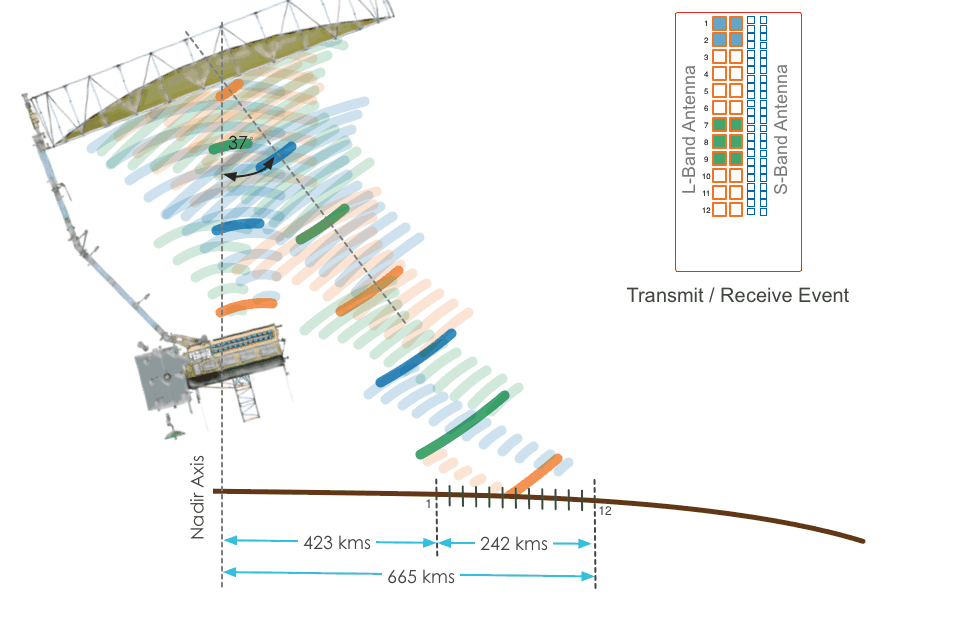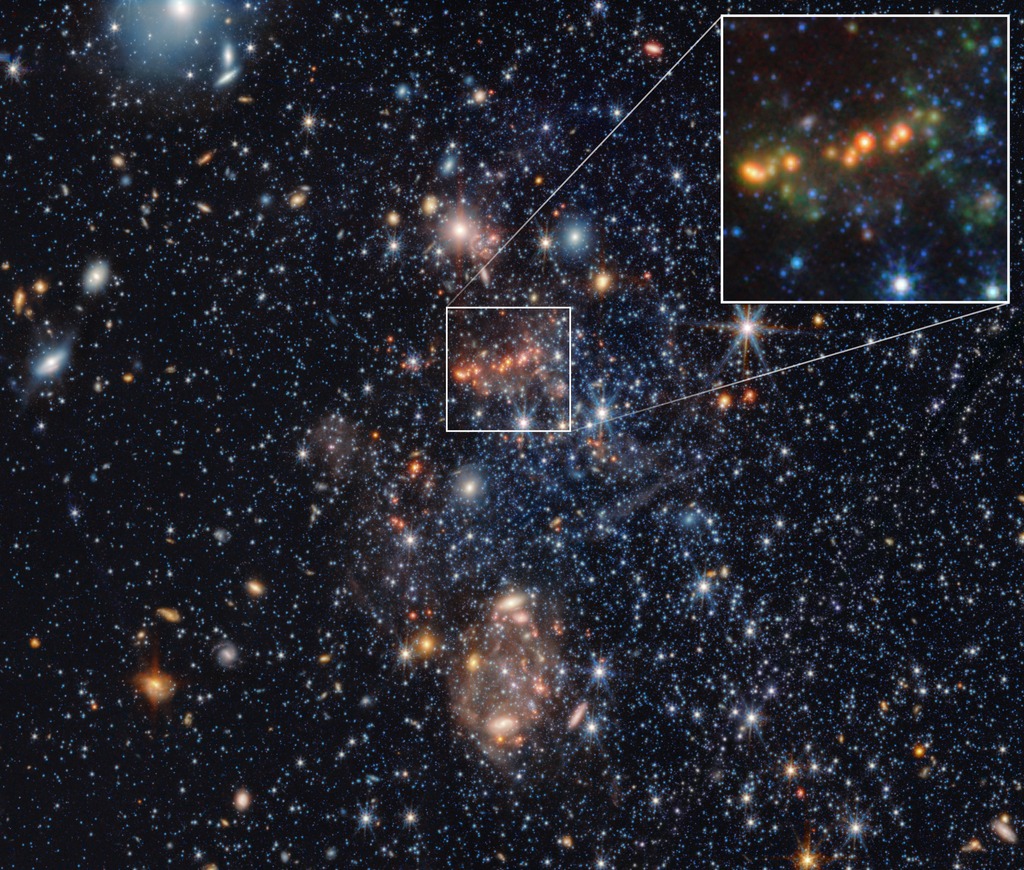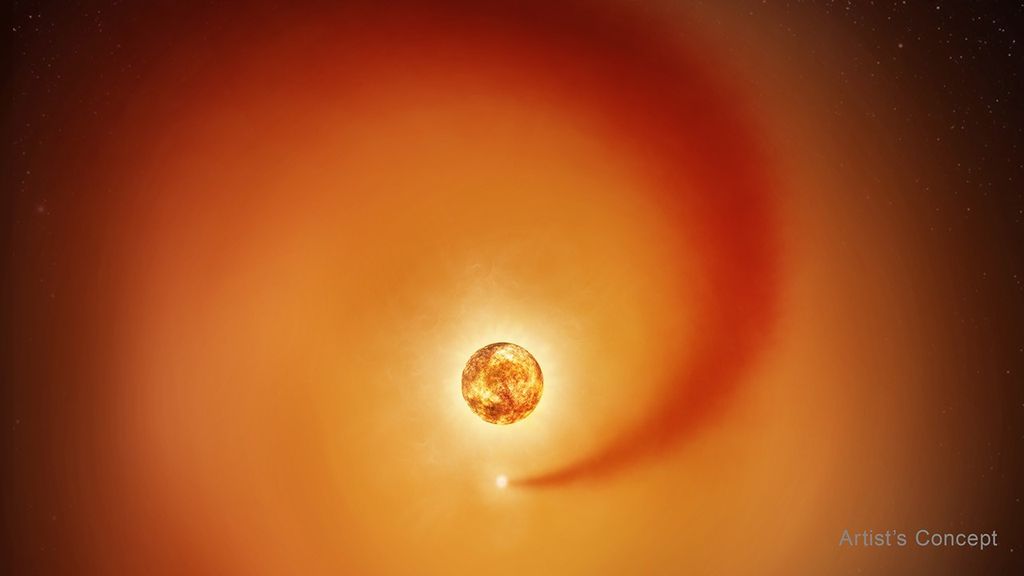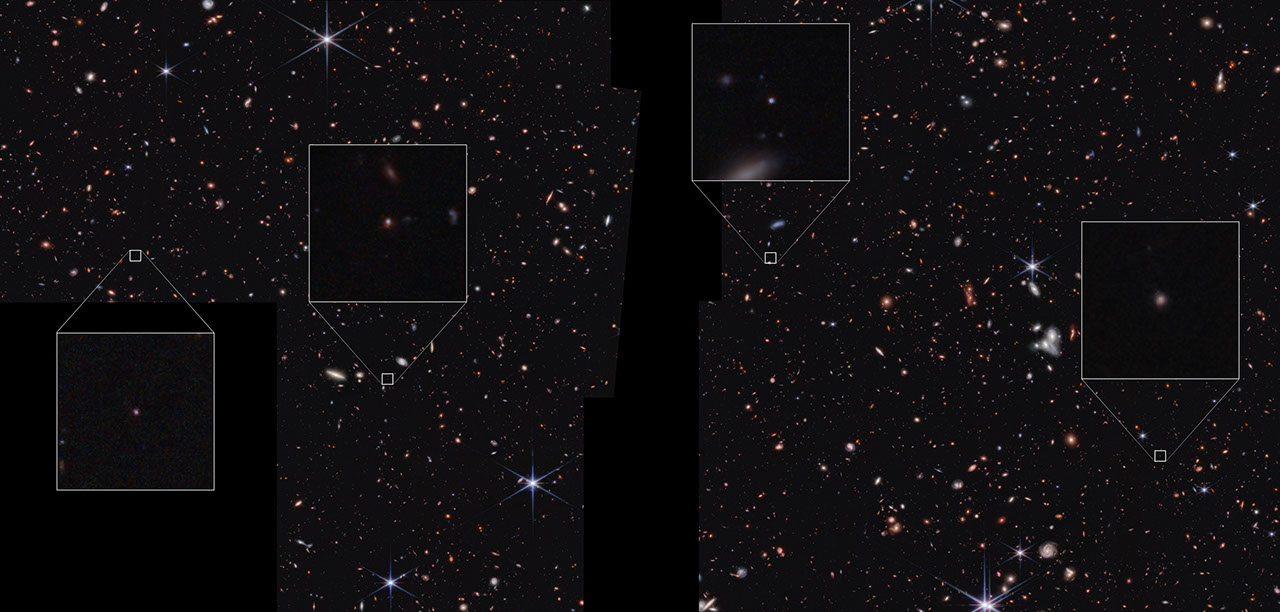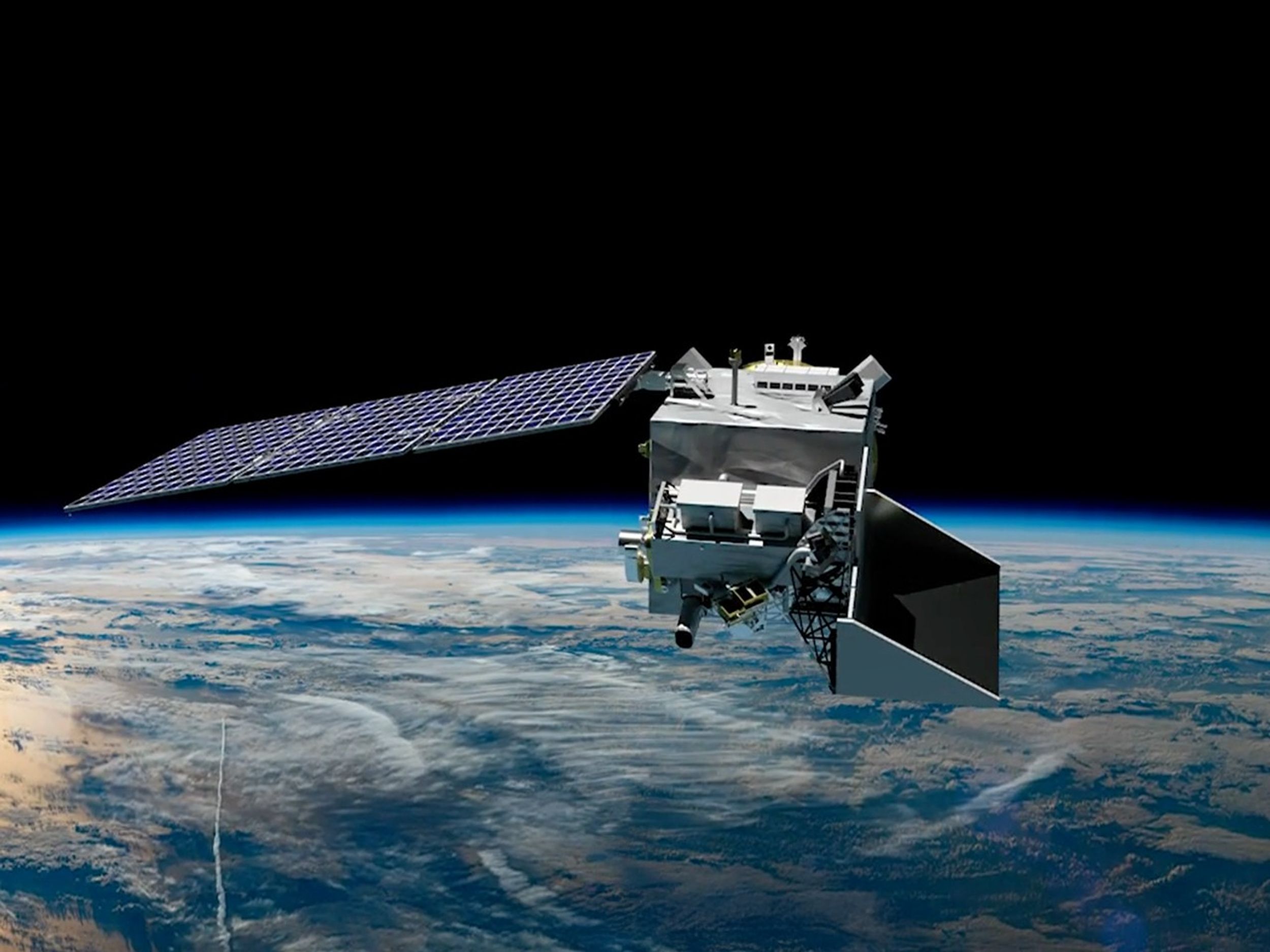2 min read
SweepSAR
NISAR’s large deployable antenna will be used in a unique operating mode known as SweepSAR to provide wide area coverage and fine spatial resolution at the same time. When it transmits microwaves, the radar’s signal feed is stationary, producing a narrow beam of microwave energy. But when it receives the returning signal echoes, the radar feed sweeps its beam across the antenna’s reflector, thus giving SweepSAR its name.
SweepSAR uses a one-dimensional phased-array feed, which is a series of individual, evenly spaced, phase-shifting radar antennas, or “elements,” arranged in rows that are individually controllable and steerable. In the radar's transmit mode, every element of the phased array is “illuminated” — sending an electromagnetic signal, much like a flashlight turning on – which creates a narrow strip of energy that first strikes the antenna’s reflector above the feed and then bounces to the ground, illuminating the full 242-km swath. These signals travel at the speed of light to the ground and then bounce, or scatter, back toward the spacecraft at slightly different times, depending on their interactions with Earth's surface.
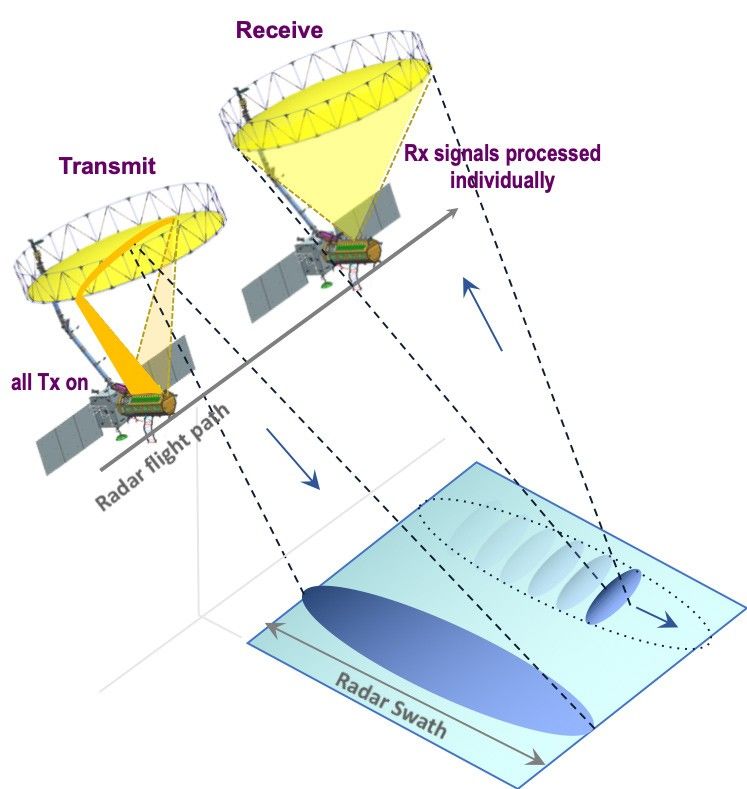
To receive the returning radar echoes, the same phased array feed "sweeps" its beam across the full area of the reflector, listening for the echoes bouncing back. As individual echoes hit the reflector, it focuses the echoes onto individual array elements, each of which can receive independently of its neighbor. As the feed sweeps, these returning signals will necessarily move across the array from element to element. Sweeping allows many echoes to be received across the wide swath because it greatly expands the area the radar’s receive mode can listen to. The different echoes are simultaneously processed as they are received by each element and combined in real time.
Because the radar cannot receive echoes when it is transmitting, there would be gaps in the swath if the radar’s pulse rate were fixed. NISAR has the ability to vary the pulse rate of the transmitted signal in order to move the gaps around over time. The data can then be processed to gapless imagery by interpolating across the gaps.
SweepSAR is a novel radar technique and NISAR will be its first space-based use. The L-band and S-band radars are designed to work independently or together. SweepSAR was designed, conceived and refined jointly by JPL and German Space Agency (DLR) engineers during the early mission study phase.
